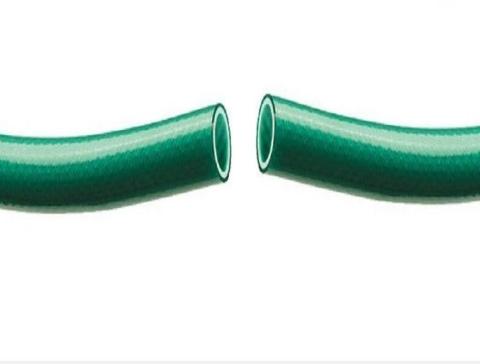Rubber hoses used in construction machinery, especially polytetrafluoroethylene (PTFE) hoses used in high demand environments, typically require excellent temperature and pressure resistance. These performance indicators ensure that the hose can operate normally under various extreme working conditions. The following is a detailed analysis of the temperature and pressure resistance of rubber hoses used in construction machinery:
Temperature resistance performance
Maximum temperature tolerance
PTFE hoses are particularly suitable for high-temperature environments, and their temperature resistance is one of their most prominent features. Usually, high-quality PTFE hoses can withstand temperatures up to+260 ° C, and can even reach higher temperatures in a short period of time. For example, certain specially designed PTFE hoses can withstand high temperature environments up to+300 ° C. This high temperature tolerance makes PTFE hoses an ideal choice for engineering machinery exposed to hot air, hot oil, or other high-temperature media.
Minimum temperature tolerance
Although PTFE hoses are more commonly used in high-temperature environments, they also exhibit good low-temperature performance. These types of hoses are typically able to withstand temperatures as low as -200 ° C, maintaining their physical and chemical stability. In cold environments, such as temperatures below freezing, PTFE hoses do not become brittle and can still maintain their flexibility and functionality, which is particularly important for engineering applications in winter or cold regions.
Voltage resistance performance
Blasting pressure and pulse pressure
Pressure resistance is another key indicator for evaluating hoses used in construction machinery, especially their performance in high-pressure environments. PTFE hoses are typically designed to withstand working pressures of up to 30 to 35 bar. In testing, the burst pressure of these hoses is typically 4 to 6 times the working pressure, which means that a hose labeled to withstand a working pressure of 30 bar may have an actual burst pressure between 120 and 180 bar. In addition, these hoses must also undergo rigorous pulse testing to simulate the effects of long-term pressure fluctuations on the material, ensuring reliability under dynamic working conditions.
Long term pressure stability
In addition to short-term burst pressure, the long-term pressure stability of PTFE hoses is equally important. Under continuous working pressure, the hose material should not experience significant creep or fatigue failure. High quality PTFE hoses are designed with reinforcement layers, such as woven steel wires or fiber reinforcement layers, to provide additional support and prevent deformation under long-term stress. This design ensures that the hose can maintain performance under continuous load, reducing the risk of failure caused by material fatigue.
Considerations in practical applications
Environmental and Media Effects
Although PTFE hoses have excellent basic temperature and pressure resistance, their performance in practical applications may also be affected by specific environments and media. For example, in environments with strong chemical corrosion, the material of the hose may accelerate degradation, affecting its temperature and pressure resistance. Therefore, when selecting hoses, it is necessary to consider the specific types and concentrations of chemicals that will come into contact with them, as well as possible temperature and pressure ranges, to ensure that the selected hoses can meet the specific application requirements.
Installation and maintenance
Proper installation and regular maintenance are key to ensuring optimal temperature and pressure resistance of hoses. During the installation process, excessive stretching or bending should be avoided, which may cause damage to the internal structure and reduce the pressure resistance. At the same time, following the manufacturer's guidance for proper installation and regular inspection of hose wear can effectively extend its service life and maintain its performance.
epilogue
In summary, PTFE hoses used in construction machinery are widely used due to their excellent temperature and pressure resistance. Understanding and correctly evaluating these performance indicators is crucial for selecting the appropriate hose, especially under harsh and changing working conditions. By considering the application environment, medium characteristics, and proper installation and maintenance, the efficiency and lifespan of hoses can be maximized, ensuring the efficient and safe operation of construction machinery.

